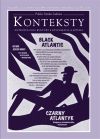Neapol i Luca Giordano (Luca Giordano, Trzej Królowie); O obrazie Luca Giordano i kolekcji Stanisława Wydżgi
Naples and Luca Giordano; On Painting by Luca Giordano and the Collection of Stanisław Wydżga
Author(s): Bogusław (Sławomir) Bobula, Antoni ZiembaSubject(s): Anthropology
Published by: Instytut Sztuki Polskiej Akademii Nauk
Keywords: Luca Giordano; painting; art; Naples
Summary/Abstract: Naples is a legendary town-myth, and Baroque Naples is a town of two extremities, pious myths and proud aristocrats, the site of ascesis and mystical experiences, as well as fun and ceremonies. The most prominent impulse for the development of Neapolitan painting, of consequence for several generations of artists, was the arrival of Caravaggio (1606). Despite a lifestyle full of scandals and evasions, his stay turned out to be a time of lively and bountiful activity with a far-reaching and long-lasting impact upon the milieu of Neapolitan masters – the adherents of tenebrism, either brutal and rough or lyrical, created by Giovanni Battista Capriccioso, Artemisia Genteileschi, Jusepe de Ribera, Bernardo Cavallino, Andrea Vaccaro and the young Luca Giordano. The great plague of 1656 produced drastic transformations. A whole generation of artists enrooted in the old formula of art died out and was replaced by the young, inclined to pursue a new trend, lavish decorativeness and Baroque opulence. They included Luca Giordano, who at the time of his journey to Rome (1652-53) became familiar with the paintings of Rubens and borrowed the latter’s manner, full of unhampered vigour and glibness, which proved to be a source of great success and a brilliant career. Giordano executed altar paintings and started to paint frescoes; the summit of his international career was his departure for Spain (1692), painting the ceiling of the Imperial Staircase at the Escorial and, subsequently, an appointment to the post of the court painter of King Charles II of Spain. Giordano painted in a workshop manner and made drawings, sketches and bozettos, thus attaining extraordinary adroitness. In the manner of all painters-authors of frescoes he ran a workshop with numerous assistants who partly executed his works or their fragments.
Journal: Konteksty
- Issue Year: 2012
- Issue No: 01-02
- Page Range: 334-345
- Page Count: 14
- Language: Polish
- Content File-PDF

